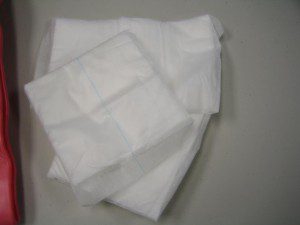Frostbite is an injury wherein there is damage to the skin and its underlying tissues caused by extremely cold temperatures. The most often affected areas of the body are the extremities (e.g. fingers and toes) and exposed skin (nose, cheeks, ears and chin), with the latter being the most vulnerable to frostbite. Although it is also worthy to note that frostbite may occur even on skin covered by gloves and other protective clothing.
The first stage of frostbite is frostnip. It is considered mild and does not lead to permanent damage to the skin. Other stages of frostbite will require medical help as damage may not be superficial only but may even affect the underlying tissues, muscles and bones. Sever frostbite may lead to complications, such as infection and nerve damage. When frostbite affects the blood vessels, damage is permanent and gangrene may occur. Hence, amputation of the affected area will be required.
Frostbite is the most common freezing injury.
Risk Factors of Frostbite
When the skin is exposed to very cold temperatures, frostbite occurs. The following conditions/ lifestyle factors may increase a person’s likelihood of developing frostbite:
- Poor blood circulation in the legs
- Smoking
- Diabetes
- Raynaud’s Phenomenon, a condition characterized by intermittent ischemia of the fingers and toes of both sides, and sometimes ears and nose in cold temperatures
- Certain medications, such as beta blockers
Symptoms of Frostbite
Frostbite symptoms are usually evident. These include:
- Pins and needles sensation in the affected body part, which is succeeded by numbness
- Cold, hard and pale skin after it has been bare and uncovered for a prolonged period of time
- Lack of sensations, throbbing or aching feeling in the affected area
- As the affected area thaws, the skin and muscle are red and very painful
For very severe frostbite, the following symptoms may show:
- Presence of blisters
- Gangrene
- Tendon, muscle, nerve and bone damage
First Aid for Frostbite
An individual suffering from frostbite on the arms or legs may also be suffering from hypothermia. It is necessary to check and treat for symptoms of hypothermia first. To administer first aid for frostbite, perform the following steps:
- Protect the individual from the cold and move the individual to a warmer place. Remove any wet clothes or tight jewelry.
- If possible, call for medical assistance immediately or transport the person to the nearest emergency department. Using sterile dressings, wrap the damaged areas. Affected fingers and toes should be wrapped separately.
- If medical assistance is not readily available, give the individual rewarming first aid. For fingers and toes, the affected area should be soaked in warm (not hot) water for 20 to 30 minutes. For nose, cheeks and ears, place warm clothes repeatedly. The warm water should keep circulating to aid in the process of warming. During the rewarming, swelling, color changes and severe burning pain may be experienced. Warming is done when the skin softens and sensations returns.
- Dry, sterile dressings should be applied.
- Try not to move the affected thawed areas.
- Avoid the refreezing of the affected areas once thawed as this can lead to more severe damages. Keep the person warm and wrap the thawed areas. Do not perform the rewarming first aid if there is no guarantee that there will be protection from refreezing.
- For severe frostbite, give the individual warm beverages to replace the lost fluids.
Learn how to administer first aid on frostbite by taking First Aid Courses. Frostbite is the most common freezing injury. It is the damage to the skin and its underlying tissues caused by extremely cold temperatures.
Online Sources:

